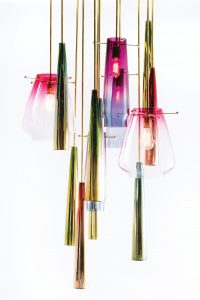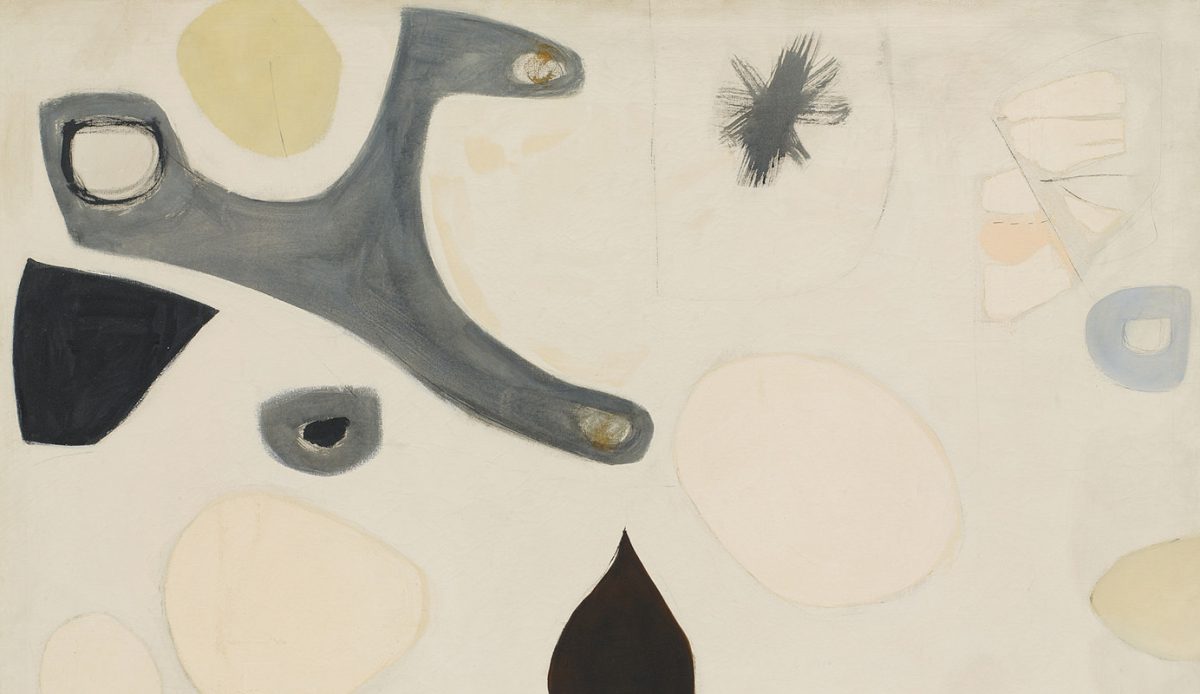At just 32, designer Ini Archibong is already taking the international high-end design world by storm, creating bespoke objects of interpretive materialism and poetic narrative. The Pasadena native, and Art Center College of Design alum, has lived, worked and studied in cosmopolitan centers from New York to Singapore to Lausanne. Archibong’s studio is based in Basel, Switzerland; and he is fresh off an artistic triumph at Milan’s Salone Satellite. But he will be the first to tell you that despite his intercontinental pedigree, his is a thoroughly Los Angeles story. “Everything I do is about finding ways to tell my own story,” he said, “and that story is completely about growing up in LA.” His uniquely thoughtful, unconventional approach to classic materials like wood, leather, glass, steel and marble—and his taste for non-traditional collaborative projects—deliberately reflect his own multifaceted background and eclectic influences.

Ini Archibong
He continued to treat his love of ceramics as a hobby, accepting a full scholarship to business school at the University of Southern California. But after two years of “ditching business courses to use the ceramics studio and audit philosophy classes,” he found himself on academic probation, and in deviation number two, walked away. By this time, the technology of digital design, especially his first love, 3D modeling, had advanced exponentially. Archibong immersed himself in its expressive possibilities while figuring out how to tell his parents he’d dropped out and waiting for a new muse to appear.
 Ini Archibong Jadis Chandelier
Ini Archibong Jadis Chandelier Ini Archibong Jadis Chandelier
Ini Archibong Jadis Chandelier Ini Archibong Jadis Chandelier
Ini Archibong Jadis Chandelier Ini Archibong Galilee Coffee Table (left), Orion Side Table (right)
Ini Archibong Galilee Coffee Table (left), Orion Side Table (right) Ini Archibong Jadis Chandelier (top), Cheshire Settee (bottom, behind table), Galilee Coffee Table (bottom, left), Orion Side Table (bottom, right)
Ini Archibong Jadis Chandelier (top), Cheshire Settee (bottom, behind table), Galilee Coffee Table (bottom, left), Orion Side Table (bottom, right) Drawn to the luxury sector, first in Singapore, then in Switzerland, Archibong earned an MFA in Luxury—yes, that’s a thing—from the the École cantonale d’art de Lausanne (ECAL), a university of art and design. He did this for access to the kind of high quality materials and production resources that he felt would best enable him to realize his vision without compromise. Zeitgeist and good timing proved Archibong right. He burst onto the scene armed with an eclectic skill set that included philosophical rigor, business education, magnetic personal charm, infectious enthusiasm and the cache of being an LA designer at a time when the European market was becoming obsessed with all things California.
Perhaps the most LA part of Archibong’s story is his friendship with the actor and artist Terry Crews, which blossomed into a collaborative patronage in which Crews ended up sponsoring/commissioning a capsule collection—one that would be the perfect unfettered expression of Archibong’s artistic identity. This suite of two tables, a sofa and a chandelier became In the Secret Garden, the installation so well received in Milan. “Terry wanted no creative control. ‘Do whatever you want,’ he said. So I made me.”
Formally, the most unusual part of the collection is the way Archibong used glass, as both structural support and allegorical content. He worked with a well-known Swiss glassblower, a master of his craft who, Archibong laughed, “had never seen anything like what I was asking for. I wanted color, I wanted glass legs that could support a marble tabletop. I wanted a table that made people wonder. I wanted magic and illusion, and we made it happen.” But this interpretive inversion of traditional materials is more than a surprising feat of engineering; it moves the story. It turns out that the series is based on the Chronicles of Narnia, aspects of ancient mythology and even Alice in Wonderland.
Even more surprising is how literal and legible those references are in the pieces, especially once you know. In the Galilee table, for example, Archibong uses blue glass in a reference to the parable of Jesus walking on water. “But did you know,” said Archibong, “that Peter also walked on water? It was just for a few seconds, before he looked down and lost confidence and fell.” In the Orion table, named for the celestial hunter, red glass stands in for blood. Orion, son of Poseidon, the sea god, could walk on water too. The Jadis chandelier is named for the White Witch of Narnia. Its canopy is marble, and the hanging lights appear to be emerging from it much the way flowers poke out of melting snow. The Cheshire Settee is the Cheshire Cat, of course; its eyes and teeth are not even subtle. “The collection explores what makes me me,” Archibong said. “It’s furniture of a personal mythology, reflecting my obsession with books, optimism, heroes… all of it. It is, I admit, incredibly literal, but you have to believe in magic to really see it.”
More information on Ini Archibong can be found at designbyini.com.









